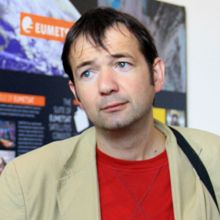Remote Sensing of Solar Surface Radiation
A special issue of Remote Sensing (ISSN 2072-4292).
Deadline for manuscript submissions: closed (30 June 2015) | Viewed by 62786
Special Issue Editor
Interests: remote sensing of surface radiation; clouds and aerosols; sensor calibration; methods for “merging” in situ data with remote sensing data
Special Issues, Collections and Topics in MDPI journals
Special Issue Information
Dear Colleagues,
Accurate information of solar surface radiation is needed in many fields, e.g. climate monitoring, solar energy, water and energy cycles, land surface studies, Earth system modeling. Satellite based surface radiation data is the only observational source of information in many regions of the world, which illustrates the importance of satellite based solar surface radiation. The accurate retrieval of solar surface radiation is therefore an important task and challenge, and the basic challenge is the same for all methods. Solar surface radiation is not measured directly, but has to be derived from the reflections measured by the satellite instruments. The complex interactions of radiation with the atmosphere and surface require the development and application of special methods. Such development of respective remote sensing methods started shortly after the launch of the first operational meteorological satellites. Since that time progress has been quite remarkable, but still significant improvements of the methods are needed in order to gain better accuracy and precision which is necessary for many application fields. The new generation of satellites offers more information about atmospheric states, which can be further explored for better accuracy. However, for many applications (e.g., climate monitoring, water energy cycles), methods are also needed which can be applied to the older satellites that usually have fewer spectral channels and a lower resolution. For these satellites, the specific challenge is to achieve high accuracy with fewer channels and to deal with calibration issues, such as gaps and flaws in satellite raw data.
We would like to invite you to submit articles about your recent research with respect to the following topics.
- Remote Sensing of direct irradiance: Methods and evaluations.
- Remote Sensing of global irradiance (solar surface irradiance): Methods and evaluations
- Remote Sensing of daylight and PAR: Methods and evaluations.
- Remote Sensing of UV: Methods and evaluations.
- Remote Sensing of spectrally resolved surface irradiance: Methods and evaluations.
- Remote Sensing of surface albedo: Methods and evaluations.
- Comparison and evaluation of different remote sensing methods.
- Improvement and evaluation of input data needed for the retrieval of solar surface irradiance.
- Review articles covering one or more of these topics are also welcome.
Authors are required to check and follow specific Instructions to Authors, see https://dl.dropboxusercontent.com/u/165068305/Remote_Sensing-Additional_Instructions.pdf.
Dr. Richard Müller
Guest Editor
Manuscript Submission Information
Manuscripts should be submitted online at www.mdpi.com by registering and logging in to this website. Once you are registered, click here to go to the submission form. Manuscripts can be submitted until the deadline. All submissions that pass pre-check are peer-reviewed. Accepted papers will be published continuously in the journal (as soon as accepted) and will be listed together on the special issue website. Research articles, review articles as well as short communications are invited. For planned papers, a title and short abstract (about 100 words) can be sent to the Editorial Office for announcement on this website.
Submitted manuscripts should not have been published previously, nor be under consideration for publication elsewhere (except conference proceedings papers). All manuscripts are thoroughly refereed through a single-blind peer-review process. A guide for authors and other relevant information for submission of manuscripts is available on the Instructions for Authors page. Remote Sensing is an international peer-reviewed open access semimonthly journal published by MDPI.
Please visit the Instructions for Authors page before submitting a manuscript. The Article Processing Charge (APC) for publication in this open access journal is 2700 CHF (Swiss Francs). Submitted papers should be well formatted and use good English. Authors may use MDPI's English editing service prior to publication or during author revisions.





